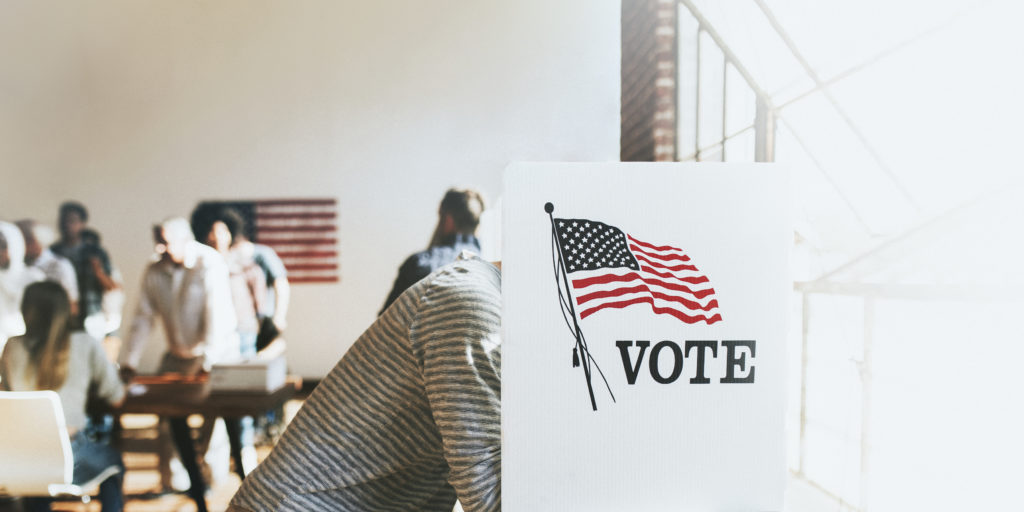
Many Democrats awoke in disbelief on November 9th, 2016. Clearly many were shocked by what they saw on the news! Maybe it was still a dream, or they had yet to put on their glasses. Surely Donald Trump, the seemingly joke candidate that many Americans thought had no chance of winning the Presidential election, could not actually have won. Unfortunately for many, Trump’s victory was for real, albeit wildly unexpected! How is it possible that Trump won when polls had Hillary Clinton’s chance of winning ranging from 70% to 99%? How did polls fail so spectacularly in and should Democrats trust them for 2020?
From “Shy Trumpers” and less-educated voters to the influence of the media and Russia, the answers may surprise you!
Poll results are only as reliable as the data they collect. A “nonresponse bias” is one factor that has been used to explain the failure of polls to predict the prior election. The nonresponse bias refers to a situation in which everyone in a population is given an equal opportunity to respond to a survey, however, a certain part doesn’t respond. For example, let’s consider a survey of 100 kindergarteners across a school district to determine what ice cream flavor cafeterias should sell. Now let’s say 50% of the kindergarteners respond (which would be an amazing survey result compared to real surveys) and the results show that 25% prefer chocolate and only 5% want vanilla. After starting to sell chocolate ice cream in the cafeteria, chocolate sales are surprisingly lower than anticipated because 45% of the kindergartners who did not respond prefer vanilla. That is the nonresponse bias in play: those kids who did not vote for vanilla but ended up buying it are comparable to less-educated voters who did not respond to polls but came out in force for Trump. In 2016, college graduates favored Clinton by 21 percentage points, and voters without a college degree favored Trump by 7 percentage points. The data for white voters was even more striking, as voters without a college degree backed Trump twice as much as voters with a degree. Anti-establishment sentiment lead to notoriously low response rates in polls. The same anti-establishment sentiment that fueled an unwillingness to respond to polls also increased enthusiasm to back Trump.
Even when Trump supporters responded to polls, the stigma against support for Trump prior to the election created even more inaccuracies in the data. Voting for Trump was viewed as socially undesirable, leading to many “Shy Trumpers” denying their support for the new President to pollsters. Trump’s campaign counted on these folks who didn’t answer polls honestly to come out in force in the privacy of the electoral booths. These bashful Republicans artificially inflated Clinton’s numbers in key battleground states, while simultaneously creating inaccurate low polling numbers for Trump. Many research institutions believed that the online polls would be more accurate since the person being polled did not have to admit their unpopular candidate choice to the pollster’s face, but the shy Trump effect carried over into the online polls and continued to wreak havoc on the data.
The media contributed greatly to the failure of polls. In the past, polls would track voter data in the states over time. While the practice of long-term polling was very costly and took many years to complete, the result was an accurate picture of how voters’ demographics and political associations had changed over time, writes Karlyn Bowman in her work “The Trouble with Polling.” Long-term polling allowed researchers to accurately predict future changes (Bowman, 2018). However, since the early 2000’s, there has been a shift away from these long-term polls to very short-term polls that follow the hottest story in the news cycle. Instead of following voter trends in Florida from 1980 to 2010, for example, pollsters hopped on the latest trend such as asking if people supported Trump in Florida immediately after he gave a fiery speech at a local rally, or after a controversial debate. These short-term polls that follow intensely charged events in the media do not give accurate long-term data that may be used to predict elections. So why has this change occurred? Follow the money. Media networks will pay a lot of money for a poll that will either corroborate their story or contradict their competitors’! So, these polling companies have a lot to gain from politically charged polls that trend with what’s hot in the news. The media’s role in the failure of polls in 2016 was amplified by Russian meddling in the 2016 election.
Russian interference in the 2016 election was both systematic and covert. No poll was able to predict that the Russian military would use top hacking units to steal internal polling data and other secret documents from the Democratic party in 2016. These documents were then disseminated to journalists and bloggers to destroy the Clinton campaign. “Yes, that really happened” states the Assistant Attorney General of the National Security Division John Demers in an interview with 60 minutes. The evidence of Russian interference is so strong that Demers claims the Justice Department could “prove that in court tomorrow if we had to.” “Malicious Russian interference in the election could even be proven without submitting any classified documents”, states Demers. Can Democrats trust that the 2020 election will be able to proceed fairly without foreign interference? No, but in order to preserve democratic elections, it is important to recognize the signs of misinformation efforts and make a stand against election hacking.
It’s important to know that investing money, just like polling, requires thorough and accurate analysis. Just as Democrats learned, if you follow flawed data and don’t account for certain key variables, the results can be disappointing. The same holds true for investing. With proper data and analysis, both polls and the stock market can better forecast the outcomes you desire. The ‘Demand Hope’ portfolio will help you invest in your future and stay true to your values. You’ll be investing in companies that support Democratic values, such as Global Green Bonds and Gender Diversity Stocks giving our future a little more…HOPE.
This report is a publication of Demand Wealth. Information presented is believed to be factual and up-to-date, but we do not guarantee its accuracy and it should not be regarded as a complete analysis of the subjects discussed. All expressions of opinion reflect the judgment of the author as of the date of publication and are subject to change.
